Race training taper & details of the final days
Reviewing the final taper and key details in the days and hours before a goal race.
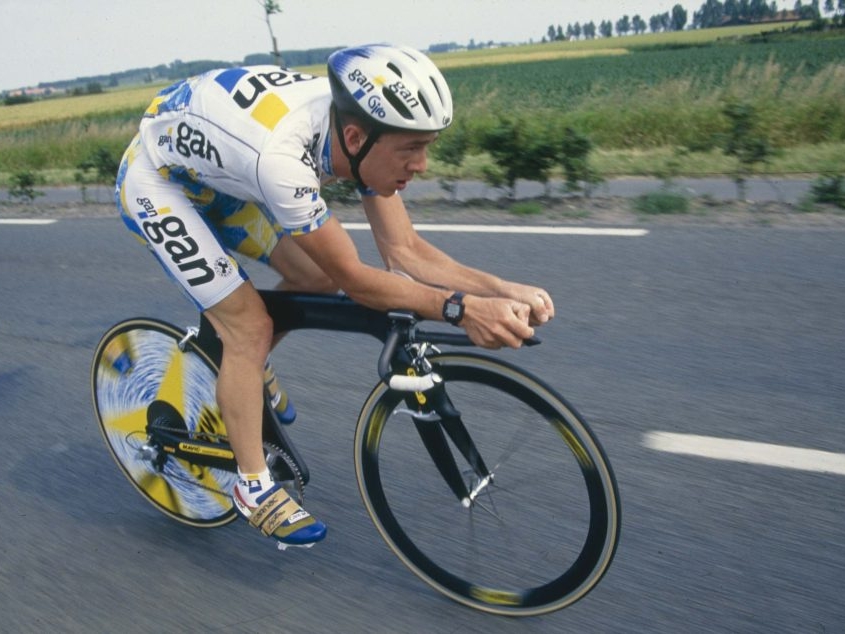
Tapering before competition
The thing to remember is that, in the crudest terms, to train is to stress the body through exercise, before allowing it sufficient time to recover and rebuild itself in a stronger form. Without sufficient rest, training is pointless.
Tapering should occur in the final phase of training before a major goal.
During this period the volume of work is slowly reduced as your objective approaches. Although you will still be doing quality training, the aim is to ensure that you arrive at the start line with your body working optimally.
A full taper is something that should be attempted only a few times a year, as it involves a significant reduction in training volume, but part-tapers of shorter terms can be used on a more regular basis.
With one week to go, training is finished and it is highly improbable that you will generate more form in this period through more training. It is, however, very easy to compromise your condition in this final week by trying to do too much.
During the taper week you should start to feel fresh and alert and have an increasing sense of well-being, so hard training would be both no problem and psychologically satisfying to one’s ego. However, you must resist the urge to do more than has been planned for the taper period. In this phase, less is definitely more.
A typical taper week involves about 60 per cent of the usual intensity and volume of training and exercises that are more about technique at high powers than overloading the body.
The final details
Best way of dealing with the details is to make as many of the decisions that need to be made, in advance, by mapping out how you want the week to go.
In the taper week you should take the time to plan your rest periods and not just sleep. Also, think carefully about your diet, to give your body all the building blocks necessary to repair cell damage and store sufficient fuel for the race itself. However, keep an eye on the overall volume of food consumed for the majority of the week, remembering that you are only using about 40 per cent of the calories you would normally require when training.


The day before
This short period is where all your hard work can be lost through needless mistakes. We’ve seen it happen many times at World Championships and other events, when all the details haven’t been worked out and people start running around at the last moment like headless chickens.
To give you an example of how to attempt to avoid such a predicament, here are a few of the questions looking to seek answers to well before a race:
Week
Weeks or sometimes months before the day ascertain whether: it is necessary to see the race circuit in order to make basic equipment selections such as chaining sizes, sprocket choice and tire selection. This recon also gives you a mental image of the challenge to be faced that can be used in training. Quite often this information will influence the type of exercises that are done and the roads choosen for them.
- The day before the race ride the circuit again and see how barrier placement has affected the corners, work out a racing line and consider how rain would affect the surface. Do this alone, absorbing as much information as possible.
- If possible, see where the signing-on area will be and check the distance between the start and the team parking area so that when I arrive on the day you will be familiar with the environment in which you will be working.
- On returning to the hotel, give final instructions to the mechanics on gear and tyre choice. If in any doubt about tires, always opt for the ‘safer’ road models.
- That evening have a quick meeting with staff, including: mechanic, soigneur and the team director to make sure everyone knows who is doing what the following day. Work out what equipment, clothing and food you will use after seeing the start time.


The big day
Here is a sample of a typical day, if the start was at 4pm, would look like this:
- 8am: breakfast.
- 10am: one hour on bike usually on the circuit with some small efforts.
- 11:30am: sleep or read, put race numbers on, pack race bag
- 1pm: light lunch of pasta, omelette and snack.
- 2:30pm: arrive at start area, sign on and get the official start time, checking how long it will take to get to the start line from the warm-up area. Return to bus and lay out race kit; have a read to stay relaxed.
- 3:20pm: get ready for warm-up.
- 3:30pm: get on rollers for 20 minutes progressive warm-up (see Warmups below),
- 3:50pm: finish warm-up, towel down, put helmet, glasses and mitts on.
- 3:52pm; roll to start.
- 4pm: race.
Obviously, this is an example, but a structured approach is sound for any discipline and it definitely reduces the possibility of disaster.
Warm-ups
A few pointers here; the warm-up is just that, to warm-up muscles. It is not designed to give nervous people something to do to kill time.
In a stressful environment it is the hardest thing in the world to do nothing, so have a book or magazine with you to help pass the time.
You may want to vary the length of time you spend warming up to suit your needs, but having — over more than a decade of trial and error —minutes before the start. I have arrived at the following procedure:
Around 20 minutes total time, stopping about 10 minutes before the start of race or when needing to go to staging.
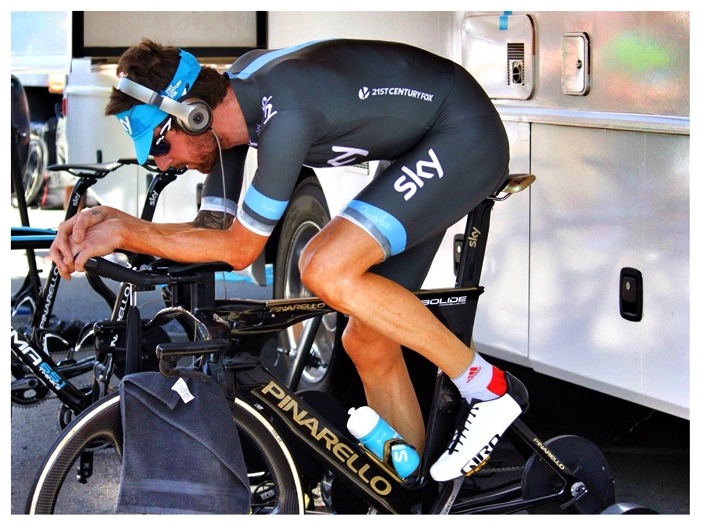
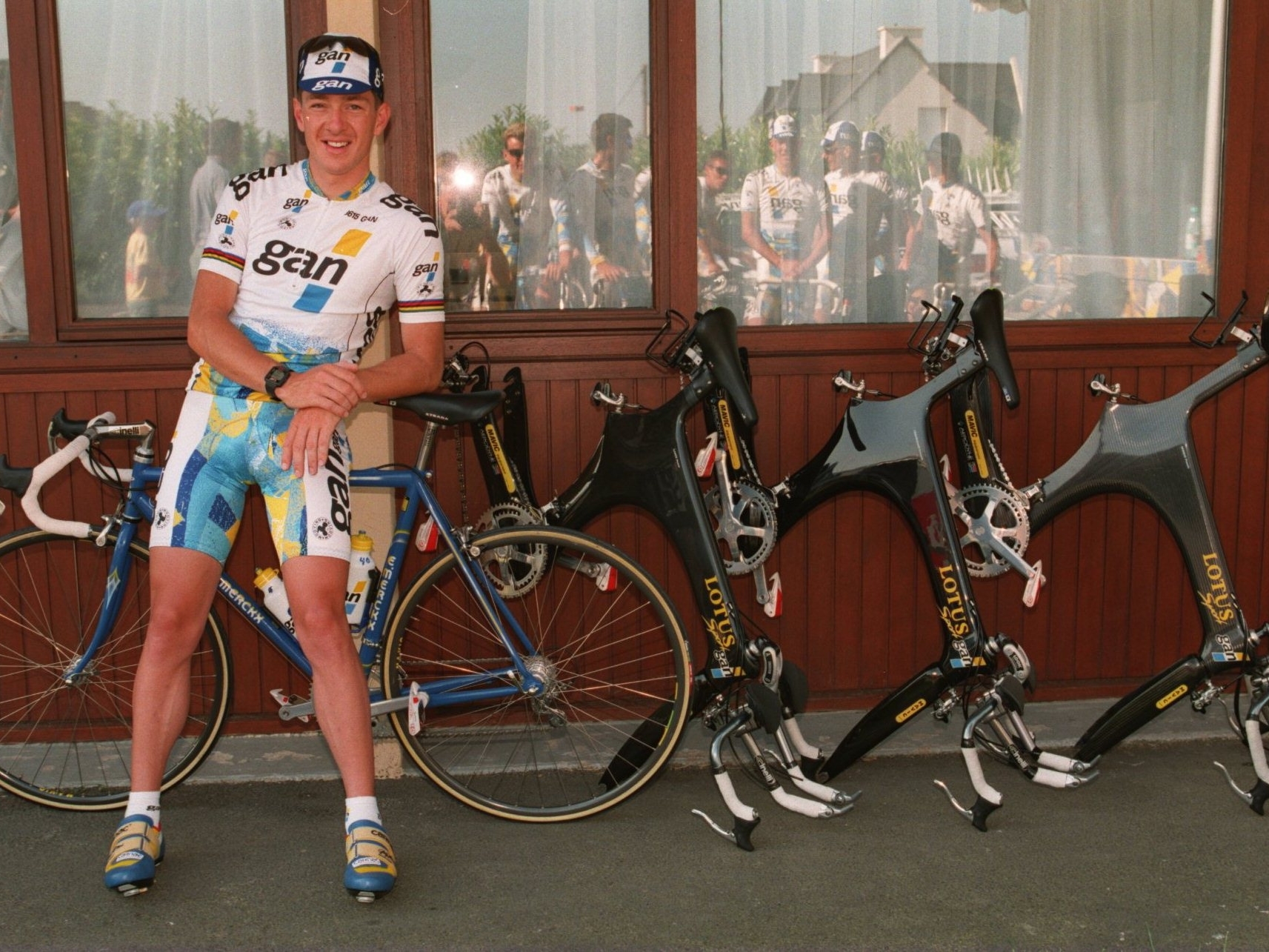
Equipment
Use a static trainer for warm-ups. This useful piece of equipment allows two things:
- Visualize the race route and focus on how you are going to tackle it physically, mentally and technically, without interruption or undue distractions
- Undergo a repeatable and controlled warm-up every time, regardless of the surrounding terrain or weather. There is also no significant wind-chill factor on a static trainer, allowing warm-ups that are short and effective and keeping energy reserves for the race.
Protocol
Regarding the intensity of the warm-up, a progressive approach works best. Beginning at a cadence of more than 100 rpm, with five minutes going from stationary to lower level 1 (a low heart rate) 5 minutes progressing from here to upper level 2 and five minutes going touch level 3, or tempo pace. Then progress to level 4 or time trial pace for two minutes before doing two 10″ sprints at a high cadence with about one minute between each before winding down in the final minute. The sprints help to stop the starting effort from coming as a shock.
Your pulse during the warm-up will vary too. If fresh, it will probably be much higher than normal; this is good. In the middle of a stage race the opposite will be true so don’t forget this is also normal and everyone will be the same.
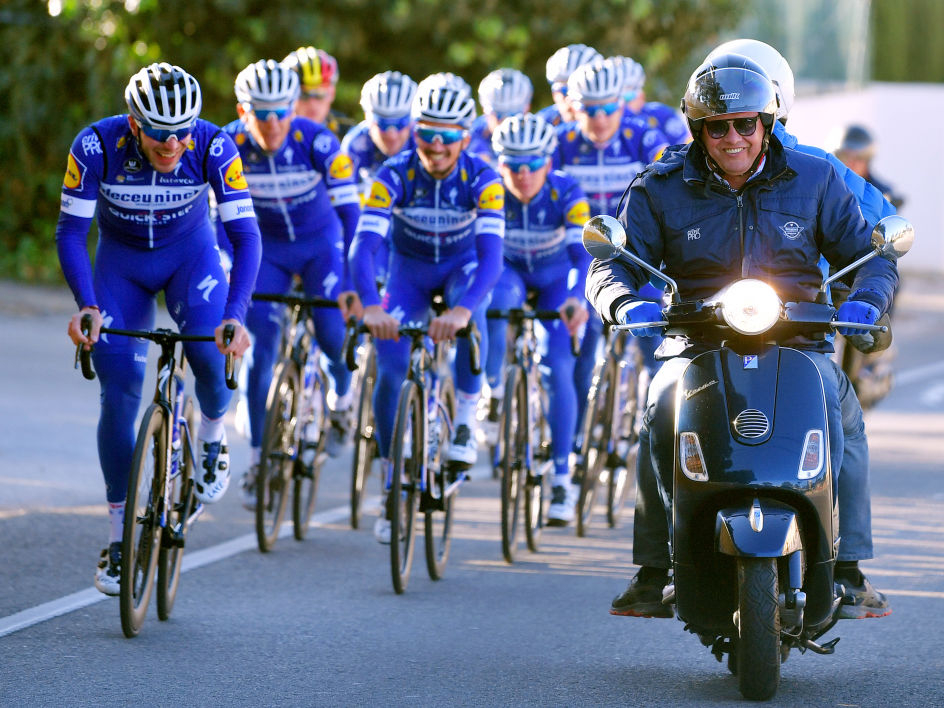

Your sport, your responsibility
This is your ‘sporting career’, so take charge of it. Make yourself responsible for planning, organizing and delegating what has to be done Never assume that someone else will do it.
- If you have the chance, memorize the race route, or key parts of it
- Give yourself time to plan. Get used to making notes and timetable so everyone knows what their responsibilities are.
- Good communication is a key element in any strategy. For a professional rider, regular contact with key personnel is crucial and, during the final few days before a main goal, a daily meeting is essential.
- Practice your warm-up so you are comfortable with it on the day.
- Plan in time to fix disasters.
- And finally, if possible, have two of everything, making sure you’re prepared to use the reserve item if the need arises. Good luck.
Psychology
A section on the psychology of the athlete seemed the most appropriate way to outline two philosophical standpoints that are worthwhile adopting in your approach to sport.
• The first standpoint is that not only is it OK to make mistakes, it can even be desire-valuable lessons. The tragedy occurs when you make the same mistake twice.
• The second point to consider is a personal maxim: strive not to be the best, only to be as good as you can be – if you can achieve this, no one can ask any more of you.
In preparing for a major event correctly we have already applied a lot of psychological techniques, namely:
- Structuring our approach to control all the controllable influences on our performance.
- Implementing a communication structure with the key people who will be involved with our training and racing.
- Researching our objectives in order to visualize how we are going to tackle them both technically and physically.
- Keeping detailed records of our training and performances in order to learn from our mistakes and implement the lessons in our future endeavors.
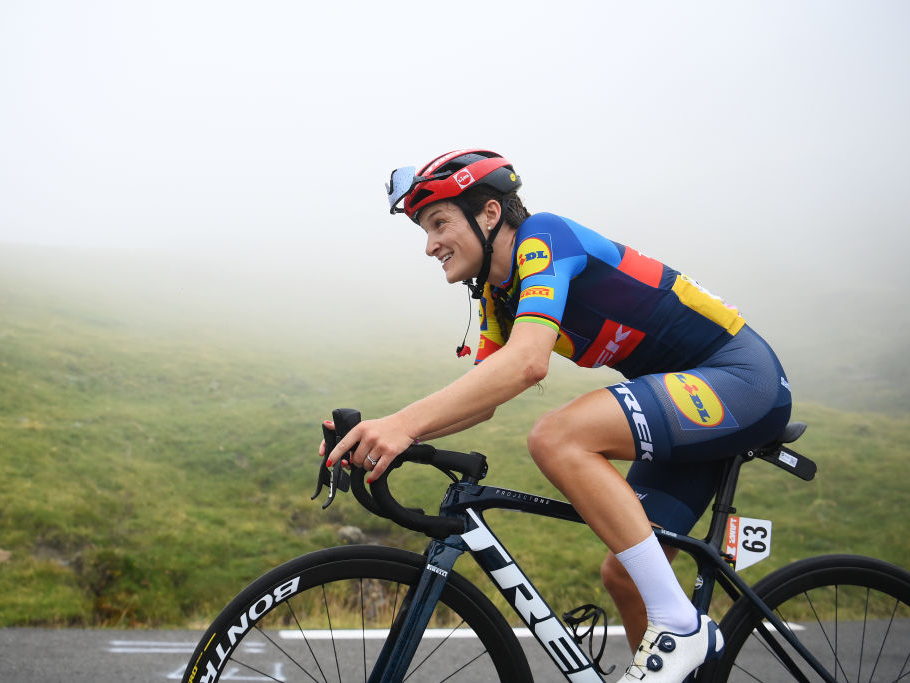
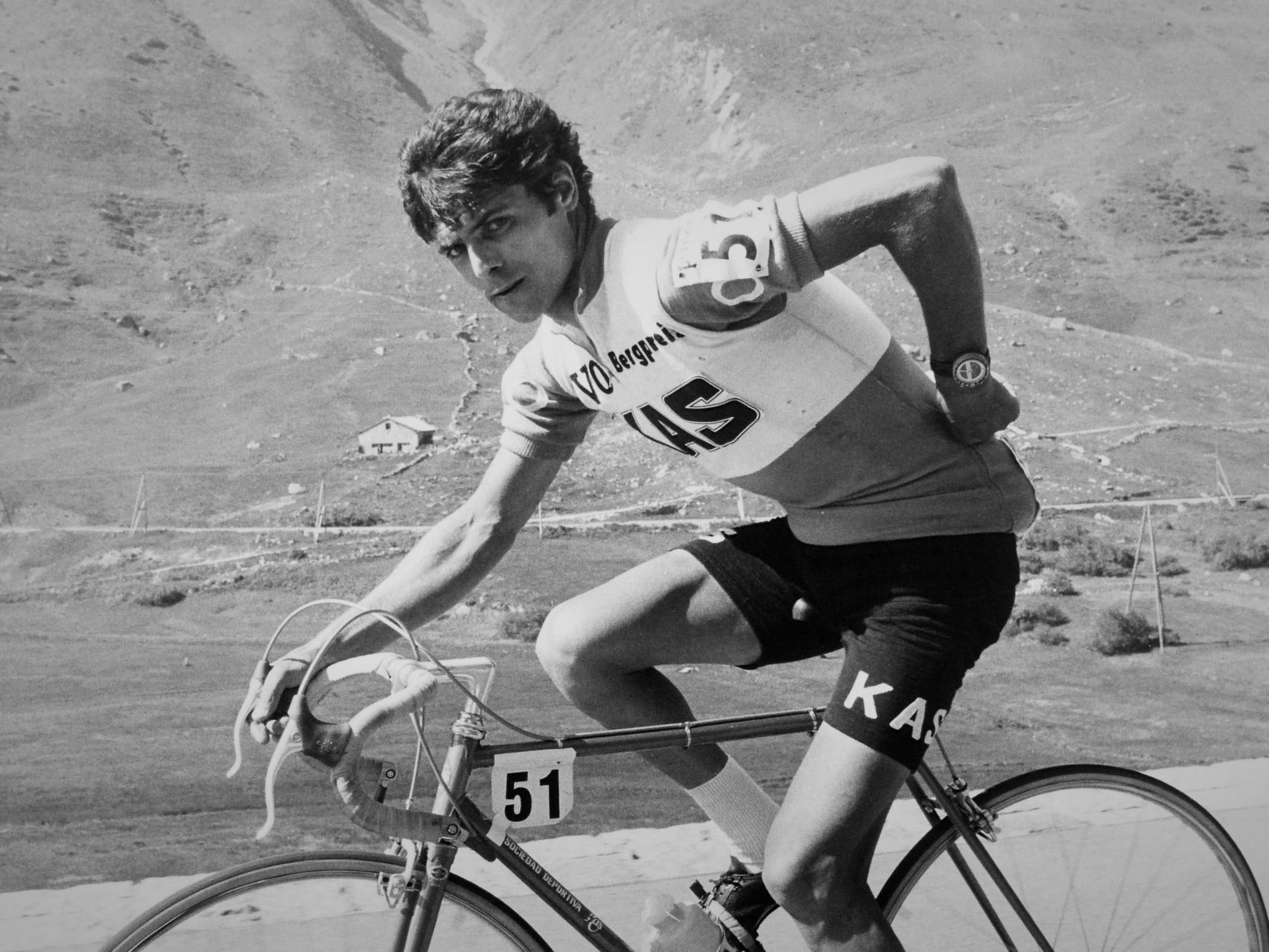
Morale and focussing
Morale is a small word that has a huge effect on performance. By implementing the above strategies, you’ve already gone a long way towards removing a lot of the things that can dent a positive mental approach.
Another maxim, is to try to treat difficult situations – be it a last-minute mechanical failure or adverse weather conditions — as a challenge as opposed to a problem. After all, the only other option is to quit and then you definitely won’t succeed.
It also helps either have someone on hand to remind you of these things when necessary, or alternatively to write down just a few statements of your own, that will help to focus you on the task in hand and put those statements somewhere prominent, perhaps where you will be warming-up before a race.
*Some excerpts from CS July 1999 by Chris Boardman